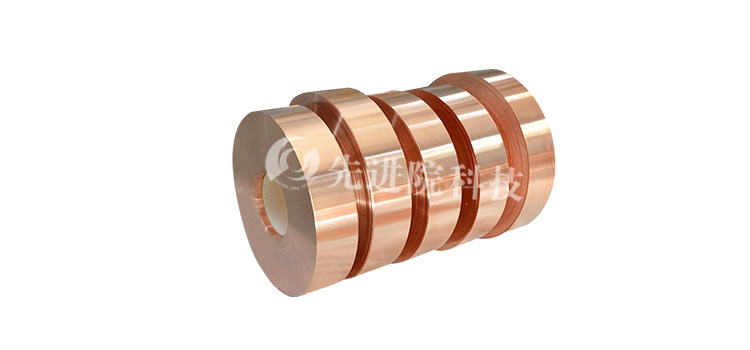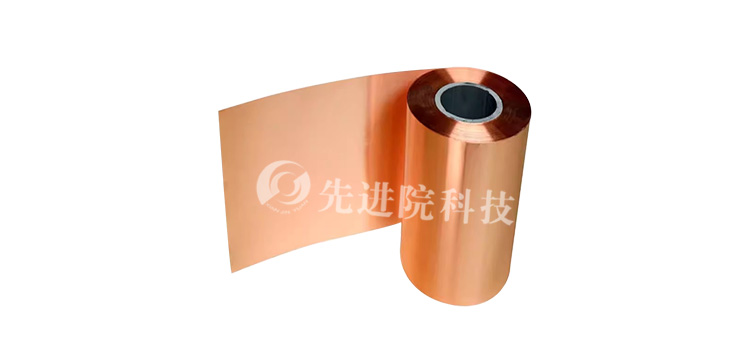The significant difference in surface properties between PET and PP affects the performance of copper foil. Due to the fact that PET and PP films belong to polar and non-polar polymers, there is a significant difference in surface properties. This difference has a significant impact on the bonding strength between the substrate and copper film, resulting in differences corresponding to different substrates
PVD coating equipmentThere are significant differences in the configuration and production capacity indicators.
From a performance perspective, PP and PET films each have their own advantages. Specifically, as follows:
PET film:
1) Better adhesion, higher melting point, and lower process difficulty;
2) Higher tensile strength and lower raw material costs.
PP film:
1) Better acid and alkali resistance, more stable in electrolyte;
2) The density is lower, and there is more room for increasing energy density.
PET film is advancing rapidly, with PET film being the main industry currently. In the future, it is expected that the PP film and PET film routes will run parallel. Due to the low process difficulty, the industrialization progress of PET film is relatively fast, making it the main choice for companies in the industry. However, PP film has weak adhesion and tensile strength in magnetron sputtering, and is still being modified. It is expected that with the gradual maturity of composite foil technology, the proportion of PP film selected as composite copper foil base film will increase due to its advantages in battery applications.
Coating method: The mainstream methods are two-step and three-step, with the three-step method adding vapor deposition
currently
Composite copper foilThe preparation methods mainly include two-step and three-step methods, with the three-step method adding a vacuum evaporation step:
Two step method for magnetron sputtering water medium electroplating:
1) Magnetron sputtering activates polymer films. Due to the non-conductive surface of PET/PP, direct electroplating is not possible. Therefore, surface treatment and activation of the polymer material are required, followed by sputtering to form a metal copper film with a square resistance of less than 2 Ω (thickness of approximately 30nm70nm);
2) Thicken the metal layer through water-based electroplating to achieve conductivity. After forming the basic copper film by magnetron sputtering, the copper layers on both sides are thickened to about 1 µ m by aqueous medium electroplating, achieving the function of current collector conductivity, which is similar to traditional copper foil technology.
The three-step method is magnetron sputtering vacuum evaporation for aqueous medium electroplating: a vacuum evaporation step is added after magnetron sputtering to improve the deposition rate. The deposition rate of vacuum evaporation is 3-4 times that of magnetron sputtering, which can quickly supplement the thin copper film to a thickness suitable for electroplating.
Magnetron sputtering: The difficulty lies in preventing breakdown, with good adhesion but poor uniformity
The difficulty of magnetron sputtering lies in preventing the breakdown of the base film. Due to the thinness of PET base film, which is only 4 μ m, sputtered copper atoms can penetrate and embed solely through kinetic energy, making it easy for the base film to be completely penetrated. It is necessary to find suitable production parameters, speed, and tension control to embed the polymer without penetrating. Magnetron sputtering has good bonding strength but poor uniformity, which affects
Composite copper foilThe key to yield. The advantage of magnetron sputtering technology lies in its tight deposition and good bonding between the copper layer and the polymer layer. However, its disadvantages are also quite obvious. In the two-step process, a 10% yield is generally lost in the magnetron sputtering stage: the surface is uneven, and it is difficult to control how many metal atoms are ejected each time, which can lead to uneven surfaces and affect battery performance; The PET base film is very thin, which can easily cause wrinkles and unevenness of the film during unwinding/rewinding; The deposition efficiency of magnetron sputtering is relatively low, and the cost of using magnetron sputtering coating alone is too high. Magnetron sputtering equipment is constantly iterating, and with the continuous improvement of line speed and yield, the production capacity of a single device increases proportionally. The initial line speed of magnetron sputtering equipment was less than 10m/min, but it has now reached 20m/min (Tengsheng 2.5 generation machine) and will continue to improve in the future; In addition, the yield of magnetron sputtering equipment from top manufacturers has increased to 90%. Due to the improvement of line speed and yield, the production capacity of a single magnetron sputtering equipment has doubled.

Traditional copper foil: thinning has a theoretical upper limit, making it difficult to balance cost and performance
Copper foil, as the negative electrode current collector of lithium batteries, mainly plays a role in carrying the current collected by the negative electrode active material. Traditional copper foil99% high-purity electrolytic copperAs the main material, copper foil has the advantages of strong conductivity, good heat dissipation, and low manufacturing cost. However, it also has problems such as high quality to weight ratio and high raw material cost. Traditional copper foil accounts for about 13% of the total weight of lithium batteries, but does not provide any capacity during the charging and discharging process, so there is room for further improvement in battery quality and energy density; When punctured, it is prone to internal short circuits, causing thermal runaway or even battery self ignition, thus posing a serious safety hazard.
Copper foil is developing towards thinning and increasing energy density. Currently, the thickness of ultra-thin electrolytic copper foil is less than 4.5 μ m, which has been reduced from 6 μ m to 4 μ m. The battery energy density can be increased by about 5%, but theoretically there is a thinning limit: the thinner the copper foil, the higher the processing cost. The processing cost of 6-micron lithium copper foil is 40000 yuan per ton, while the processing cost of 4-micron lithium copper foil is at least 60000 yuan per ton, reducing the thickness by 2 microns and increasing the added value by 50%. The thinner the copper foil, the easier it is to break and form sharp burrs, which can puncture the diaphragm and cause safety issues.
Composite copper foil: breaking the bottleneck, a new choice for negative electrode current collectors at present
Composite copper foil is a sandwich structure copper foil material formed by electroplating copper films on both sides of PET/PP and other polymer materials as the base film. It is different from traditional copper foil in terms of process principle, material composition, and performance characteristics. The current mainstream product is 6-6.5 μ mPET copper foilTo replace the traditional 6-9 μ m electrolytic copper foil. Composite copper foil has broken the bottleneck of traditional copper foil, and has the advantages of high safety, high energy density, and low cost. Theoretically, it may be an optimal solution for current negative electrode current collectors and is leading a new round of industry trends.

PET copper foil has many advantages, such as direct lithium battery pain points:
One is safety. Safety is an important evaluation dimension for lithium batteries. The PET copper foil has a PET or PP organic insulation layer in the middle, which can reduce the risk of lithium battery fire or explosion.
The second is cost. Copper foil accounts for about 8% of the cost of lithium batteries and is one of the key materials that affect the cost of lithium batteries. The use of PET reduces the high cost of copper foil usage, resulting in a cost reduction of about 40% and a corresponding cost reduction of about 3% for the entire lithium battery.
The third is energy density. Copper foil accounts for about 13% of the total weight of lithium batteries and is also one of the key materials that affect the energy density of lithium batteries. Due to the lower density of PET compared to copper, the use of PET can reduce the quality of lithium batteries. With the same thickness, the weight can be reduced by about 60%, thereby improving the energy density of lithium batteries.
In addition,PET copper foilIt is also considered to have advantages in terms of loop count and compatibility.
Whether it is safety, cost, or energy density, they are all important directions for the technological innovation of lithium batteries. These advantages have hit the pain points of the lithium battery industry one by one, no wonder people are full of expectations for PET copper foil.






